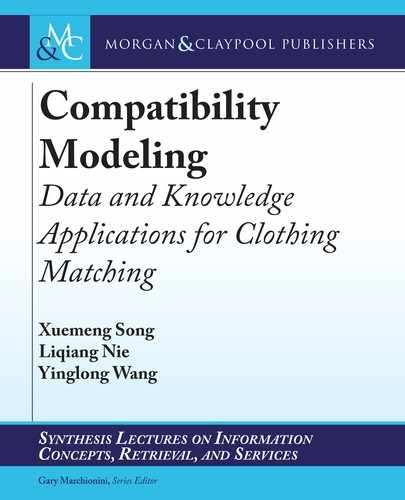1.4. BOOK STRUCTURE 5
ation. Both the user modeling, including the user preference and user body shape modeling, and
garment modeling are jointly explored.
1.4 BOOK STRUCTURE
e remainder of this book consists of six chapters. Chapter 2 introduces the data collection,
where three datasets are created for the evaluation of the proposed schemes. Chapter 3 presents
a general data-driven scheme for the compatibility modeling in the clothing matching con-
text. In Chapter 4, we propose a novel knowledge-guided compatibility modeling model that
incorporates the rich fashion domain knowledge to boost the performance. In Chapter 5, we
introduce a prototype-guided interpretable compatibility modeling framework which aims to
generate explanations for the compatibility evaluation and enhance the model interpretability
with the latent prototype learning. In Chapter 6, we study the personalized compatibility mod-
eling between fashion items by incorporating the user factor (i.e., the user preference) in clothing
matching. In Chapter 7, we further explore the personalized compatibility modeling for outfits
with the real-world application of personalized wardrobe creation, where the user’s body shape is
taken into account. We conclude this book and discuss future research directions in Chapter 8.
..................Content has been hidden....................
You can't read the all page of ebook, please click here login for view all page.
